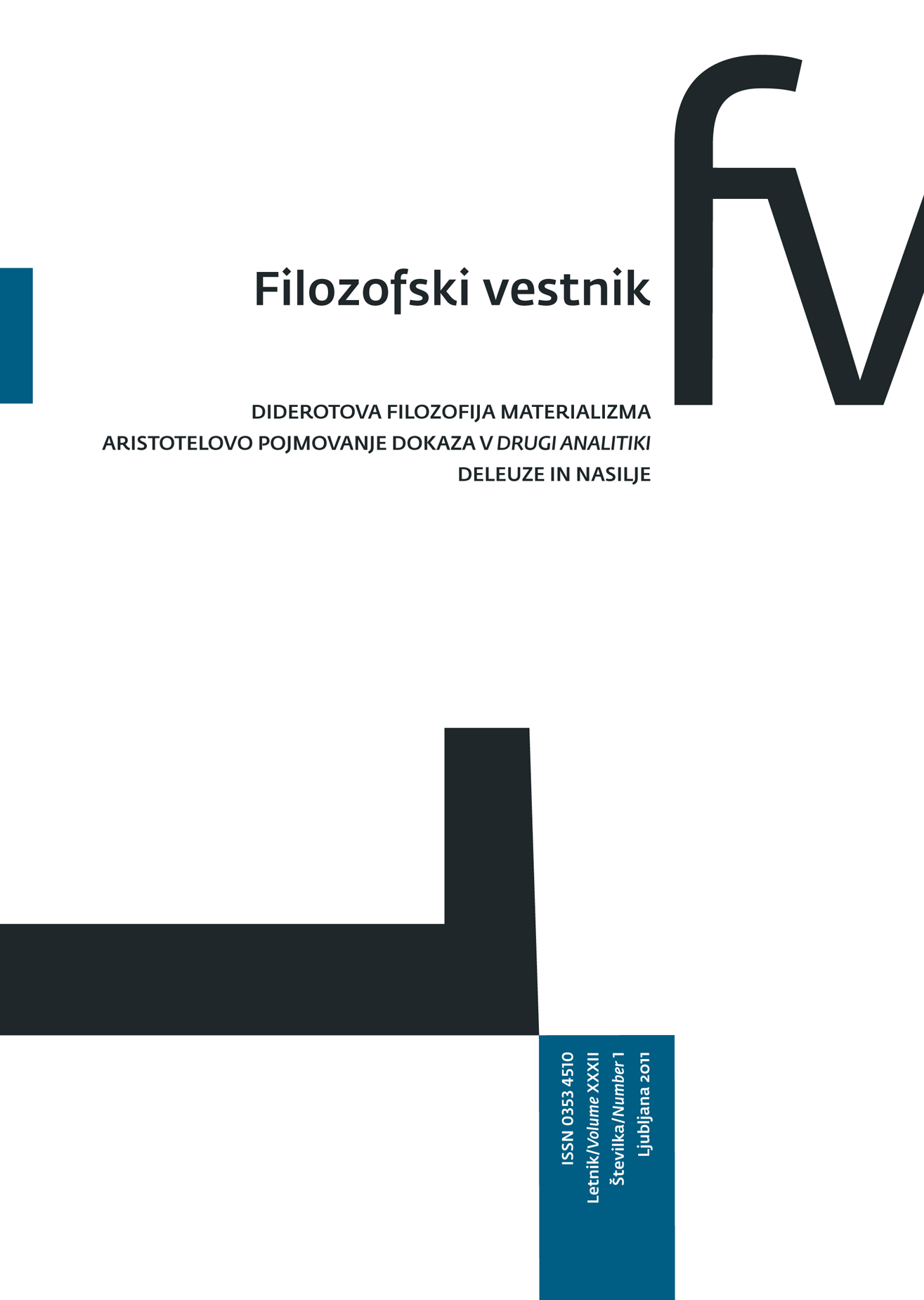Diderotova ontologija med obliko in brezobličnostjo
Ključne besede:
Diderot, brezobličnost, epigeneza, maternična mola, funkcionalnostPovzetek
V Diderotovi misli je brezobličnost pomemben, a prikrit pojem. Osnova pojma brezobličnosti je pri Diderotu fiziološka. Brezobličnost je značilnost žive tvorbe, imenovane sveženj, ki je osnova za embrionalni razvoj živali. V tem razvoju se iz vlaken svežnja z epigenezo oblikujejo organi. Hkrati z diferenciacijo organov se nedoločna občutljivost svežnja diferencira v čute. Diferencirano telo lahko deluje le kot hierarhija organov, ki jim vlada središče ali v živčevje pretvorjeni sveženj. V miselnem poskusu je mogoče zgolj z odtegovanjem vlaken oblikovano telo ponovno privesti do brezobličnosti. Temu podobno, a dejansko brezoblično bitje je maternična mola, medicinski pojav, ki ga opiše Diderot. Mola nastane bodisi v nosečnosti bodisi brez nje. Mola je dokončno fiksirana v svoji nedoločni obliki in vegetativni občutljivosti. Mola ni funkcionalna ne kot organ ne kot žival. Kot živa tvorba brez potencialnosti in funkcije mola predstavlja negacijo Diderotove podobe živega sveta.Prenosi
Prenosi
Objavljeno
2016-02-06
Kako citirati
Marek, M. (2016). Diderotova ontologija med obliko in brezobličnostjo. Filozofski Vestnik, 32(1). Pridobljeno od https://ojs.zrc-sazu.si/filozofski-vestnik/article/view/4156
Številka
Rubrike
Diderotova filozofija materializma
Licenca
Avtorji jamčijo, da je delo njihova avtorska stvaritev, da v njem niso kršene avtorske pravice tretjih oseb ali kake druge pravice. V primeru zahtevkov tretjih oseb se avtorji zavezujejo, da bodo varovali interese založnika ter da bodo povrnili morebitno škodo.
Podrobneje v rubriki: Prispevki





